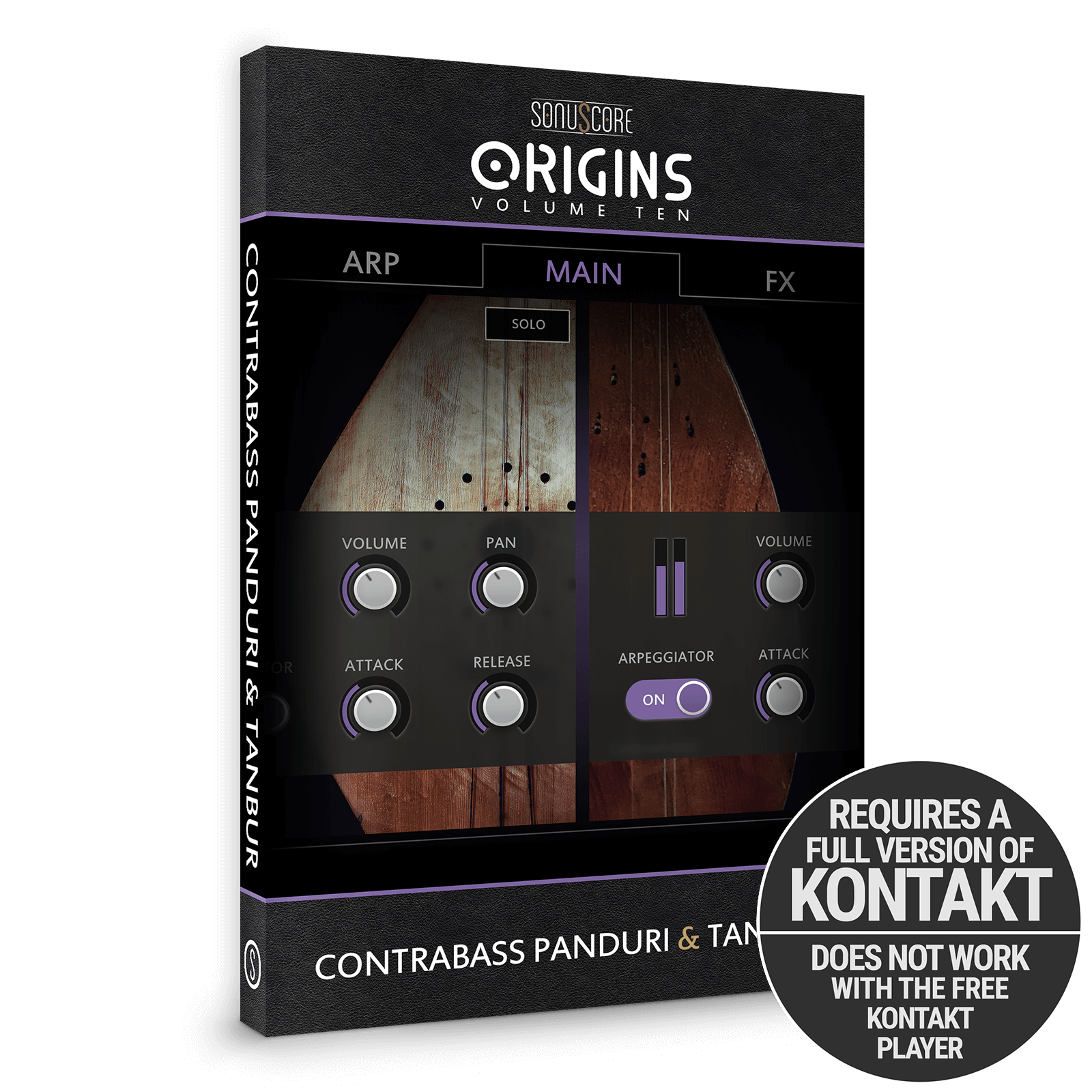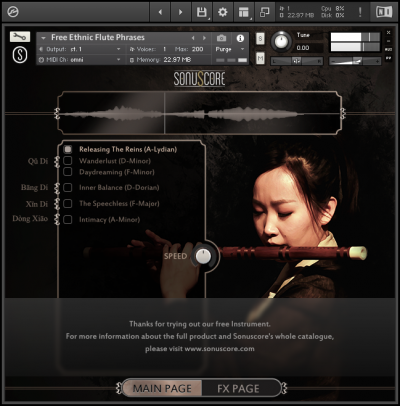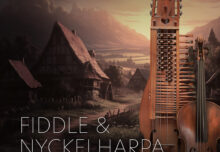NEW RELEASE
ORIGINS 10: CONTRABASS PANDURI & TANBUR
The root, inspirational idea behind the ORIGINS series is to bring together two plucked instruments from around the world and, using our double arpeggiation system, easily play complex and intricate rhythms. They can be from places across the globe from each other, like the RONROCO & BOUZOUKI, or they can be from right next door, like the CONTRABASS PANDURI & TANBUR.
The Contrabass Panduri resounds in deep and melodious ways giving a full balance to the twangy, glittering, and speedy arpeggios of the Tanbur. Such a balance is rare in the ORIGINS series and renders a new thrill in playing the Kontakt instrument. There’s not much additional sound needed with these two filling in most of the frequency palette.
Working with local partners, our sound designer Olajide Paris did the recordings for the twin instrument in Tbilisi, Georgia. “We found these two unique instruments that would fill out the ORIGINS family that can work really well melodically and in a rhythmic sense, especially through the arpeggio engine,” Olajide says. “These instruments don’t tend to cross-pollinate. There’s not any context I can think of that they’d be found together. This is a very cool collection, I think, because of that.”
THE CONTRABASS PANDURI: A TRUE RARE GEM
The Panduri family is made up of a group of wooden, plucked three-stringed instruments from the Eastern parts of the country of Georgia. The Panduri is the main variation, often used alone to accompany a vocalist or choral group. The instrument is also featured in folk ensembles and stage performances which grew into prominence in the mid-20th century.
When these folk performances were first brought onto stage by various troupes, a problem quickly emerged. They needed something to round out the bass tones and fill out the concert halls. They needed a sound both deeper and louder than the Bass Panduri was broadcasting. That’s when the Contrabass Panduri was born. It was born in a turbulent time for folk instruments though, as the electric bass was also being introduced and became popular for this function amongst Georgian folk ensembles.
“The Contrabass Panduri is still used in some modern folk groups to take on the role of a contrabass,” Olajide Paris said. “It’s tuned really low and actually uses wound strings – the same as you’d find on a contrabass – whereas the traditional Panduri and Bass Panduri use the nylon strings like on a classical guitar or many other folk instruments.”
FINDING A CONTRABASS PANDURI
It’s an exceedingly rare instrument with maybe 10 in existence. We were able to track down 3 in Tbilisi and had to really lean on our local Georgian contacts to get a hold of one.
“I had actually heard of this legendary instrument before coming to Georgia,” Olajide said. “And I always had the idea of doing such a project.” Olajide was finally able to connect to a Contrabass Panduri player for the 10th edition of ORIGINS. “It was very hard because there’s only three of them and they’re all very busy and it’s a very rare instrument, but we managed to get a hold of one for long enough to record it.”

The Contrabass Panduri

The Tanbur
THE TANBUR: AN INSTRUMENT OF AGES
The Tanbur has a long and fabled history. Legends tell of ancient Tanburs in the courts of Akkad in the third millennium BC, and it has been used across nations and regions to decorate their musical traditions. It spread throughout Arabic and Persian lands, to Turkey, Central Asia, the Balkans, Armenia, and India as well. Different regions have different varieties and different names, and sometimes the name of “Tanbur” has even been used as a label for altogether different (but similar) instruments from these regions.
“The particular instrument we used is a Persian Tanbur,” Olajide shares. “It’s a fretted stringed instrument played either with the fingers or with an implement and it has a really kind of twangy sound, similar to other instruments from the region.
“It’s got a sound that gives you a kind of identifiable ‘Eastern’ vibe,” Olajide continues. So anytime you’re trying to make something sound a little more exotic, more ‘Eastern’, or evoke sounds from this region, this is a great instrument to use. It’s great for melodies and rhythmic parts.”
Olajide was able to find this tanbur through a student of his. The student was a friend of a Persian musician that was living in Georgia at the time of the recording.
ABOUT THE LIBRARY
ORIGINS 10: CONTRABASS PANDURI & TANBUR comes with 80 presets designed to give a natural sense of what the instruments can do without the user having to do know anything about them or the traditions they are normally used in. The presets are further affected by the 12 color-presets, which help sculpt the character of the sound.
Available for the full version of Kontakt 6.7.1 or higher.
Take advantage of our 20% off intro pricing while you can!







